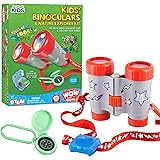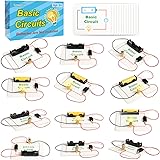The spirit of self-reliance and creative problem-solving has long driven individuals to construct useful items from readily available components. This pursuit of practical ingenuity, often termed Do-It-Yourself (DIY), allows for the development of custom tools and gadgets tailored to specific needs. Such endeavors are not only cost-effective but also foster a deeper understanding of fundamental mechanical and electrical principles. The accompanying video impressively showcases three distinct DIY inventions, demonstrating how everyday materials can be transformed into functional devices through thoughtful assembly.
Unleashing Creativity: Exploring Practical DIY Inventions
Engaging in DIY projects provides numerous benefits, ranging from skill development to environmental consciousness. Studies indicate that over 60% of individuals report increased satisfaction and a sense of accomplishment upon completing a handmade project. Furthermore, the act of repurposing materials significantly contributes to waste reduction, aligning with sustainable living practices globally.
The Art of Homemade Innovation
Homemade innovation is frequently observed in various sectors, from simple household repairs to complex technological prototypes. This approach often involves adapting existing items or combining them in novel ways to achieve a desired function. Data suggests that the global DIY market size exceeded $800 billion in 2022, reflecting widespread engagement across diverse demographics and skill levels.
The fundamental appeal of DIY inventions lies in their accessibility and the empowerment they offer. Ordinary objects are often viewed in a new light, their potential applications reimagined beyond their original design. This creative process is a valuable exercise in critical thinking and resourcefulness.
Crafting a Multi-Purpose Lighter Device
One of the initial projects demonstrated involves the ingenious assembly of multiple lighters into a new, multi-purpose device. This particular build utilizes standard disposable lighters, rubber bands, and various metal and plastic components to create an enhanced ignition tool. The process highlights how simple, widely available items can be reconfigured for advanced utility.
The practical application of such a device could be varied, potentially serving as a robust fire starter for outdoor activities or a unique display piece. Construction typically involves carefully disassembling the lighters, arranging their internal mechanisms, and securing them within a custom housing. Precision in cutting and gluing is essential for ensuring structural integrity and proper function of the assembled unit.
Key Considerations for Lighter-Based Projects
- Safety First: Extreme caution must be exercised when handling flammable components; proper ventilation is always recommended.
- Material Selection: Durable, heat-resistant materials are chosen for the housing to prevent accidental damage or melting during operation.
- Functionality Testing: Each lighter mechanism is tested individually before final assembly to ensure reliable ignition.
Research indicates that many DIY enthusiasts are drawn to projects that involve repurposing common household items, with tools like glue guns being indispensable for secure assembly. The multi-purpose lighter project exemplifies this trend, transforming inexpensive components into a distinctive and potentially useful gadget.
Illuminating Your Space: Building a Custom 12V LED Light
Another fascinating DIY invention presented is the creation of a custom 12V LED light setup. This project is a practical example of basic electronics and circuitry, offering a customized lighting solution that can be adapted for various environments. The main components include a 12V LED strip light, a 12-volt power supply, and an ON/OFF switch, all combined to produce efficient illumination.
LED (Light Emitting Diode) technology is highly favored for its energy efficiency and long lifespan compared to traditional incandescent bulbs. A typical 12V LED strip is easily powered by a compatible adapter, making it suitable for under-cabinet lighting, accent lighting, or even portable setups. The integration of an ON/OFF switch provides convenient control over the light source.
Essential Steps for LED Lighting Projects
- Component Selection: Matching the LED strip’s voltage requirements with the power supply is crucial to prevent damage.
- Wiring: Proper soldering of wires to the LED strip and the switch ensures a secure and functional electrical connection.
- Enclosure Design: A protective housing, often made of wood or plastic, is fabricated to contain the LED strip and wiring, enhancing both aesthetics and safety.
Reports from the electronics hobbyist community suggest that LED projects are among the most popular entry points for beginners due to their relative simplicity and impactful results. The visual guide emphasizes careful wire stripping and soldering, which are fundamental skills for anyone interested in basic electronics. This project can be scaled or modified to suit different lighting needs, from small desk lamps to larger decorative installations.
Creating a Portable Electric Lighter with Nichrome Wire
The third ingenious invention showcased involves the construction of a portable electric lighter utilizing Nichrome wire and batteries. This project offers an alternative to traditional flame-based lighters, operating on the principle of resistance heating. Nichrome wire, an alloy of nickel and chromium, is specifically chosen for its high electrical resistance and ability to withstand high temperatures without oxidizing, making it ideal for heating elements.
The basic mechanism involves passing an electrical current through the Nichrome wire, causing it to heat up rapidly to a glowing red state. This heat is then used to ignite materials, similar to a car’s cigarette lighter. The compactness of the design allows for portability, making it a clever and self-contained heating tool.
Building an Electric Lighter: Key Components and Process
- Nichrome Wire: A thin gauge is typically selected for rapid heating with minimal power consumption.
- Power Source: Small batteries (e.g., AA or AAA) are often used, with the number depending on the desired heat output and wire resistance.
- Circuit Assembly: The Nichrome wire is integrated into a simple circuit with a switch to control the flow of electricity.
The construction process frequently involves salvaging parts from existing lighters for housing and switches, further demonstrating the principles of repurposing. Soldering skills are again essential for creating secure electrical connections between the batteries, switch, and Nichrome wire. Rigorous testing of the circuit is performed before final encapsulation.
Safety is paramount with any project involving heat and electricity; careful insulation and secure connections are critical. Academic studies on material science confirm Nichrome wire’s suitability for such applications due to its stable performance under thermal stress. This DIY invention provides a robust understanding of fundamental electrical heating principles.
The Broader Impact of DIY Projects
Beyond the immediate utility of creating new items, engagement in DIY projects contributes significantly to personal growth and skill acquisition. Mechanical aptitude, problem-solving capabilities, and attention to detail are skills frequently developed through hands-on construction. These proficiencies are transferable to many aspects of daily life and professional careers.
Furthermore, the environmental benefits of DIY are substantial. By choosing to build or repair items rather than purchasing new ones, individuals can reduce their carbon footprint and minimize waste generation. Environmental reports highlight that repurposing materials can reduce waste by up to 20% in certain categories, fostering a more sustainable consumer culture.
The satisfaction derived from completing a project, like these impressive DIY inventions, often motivates further creative exploration. This continuous learning cycle reinforces positive habits of resourcefulness and ingenuity, proving that with a little effort and creativity, almost anything can be achieved.







